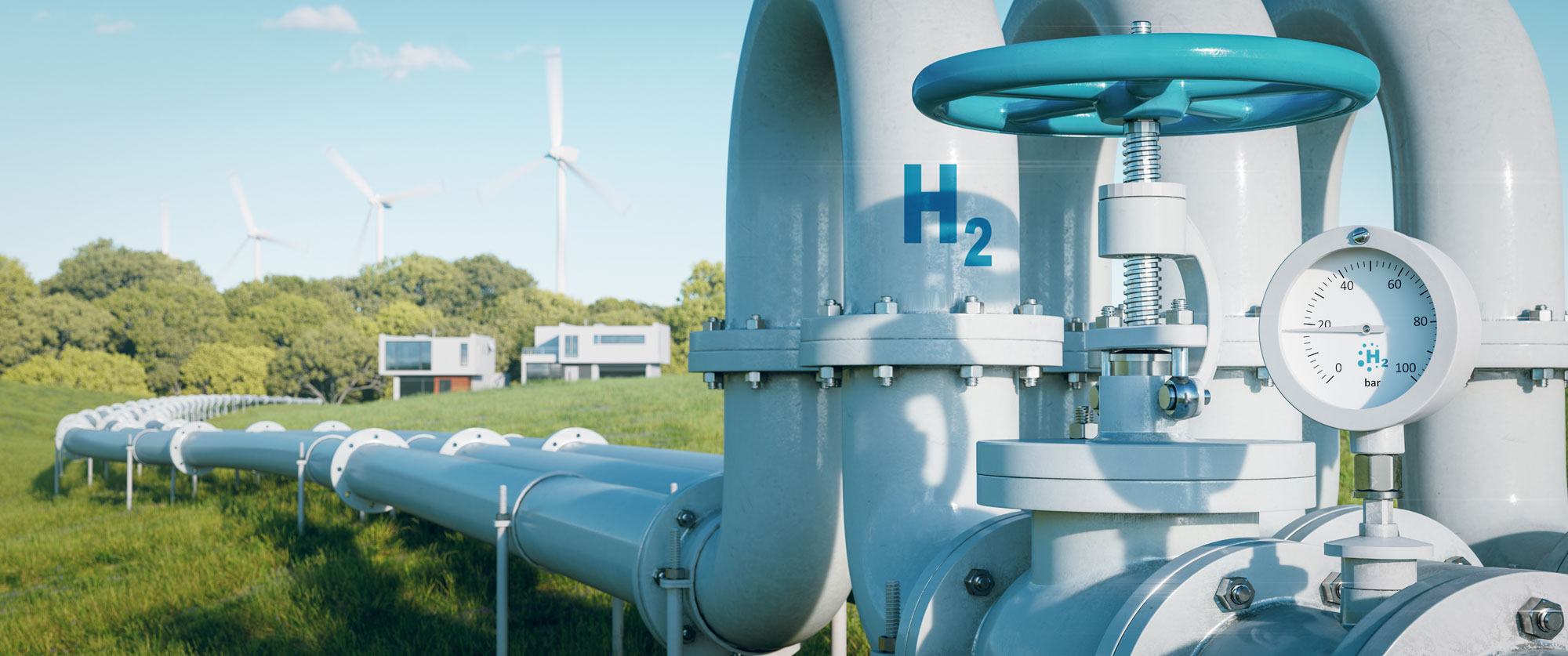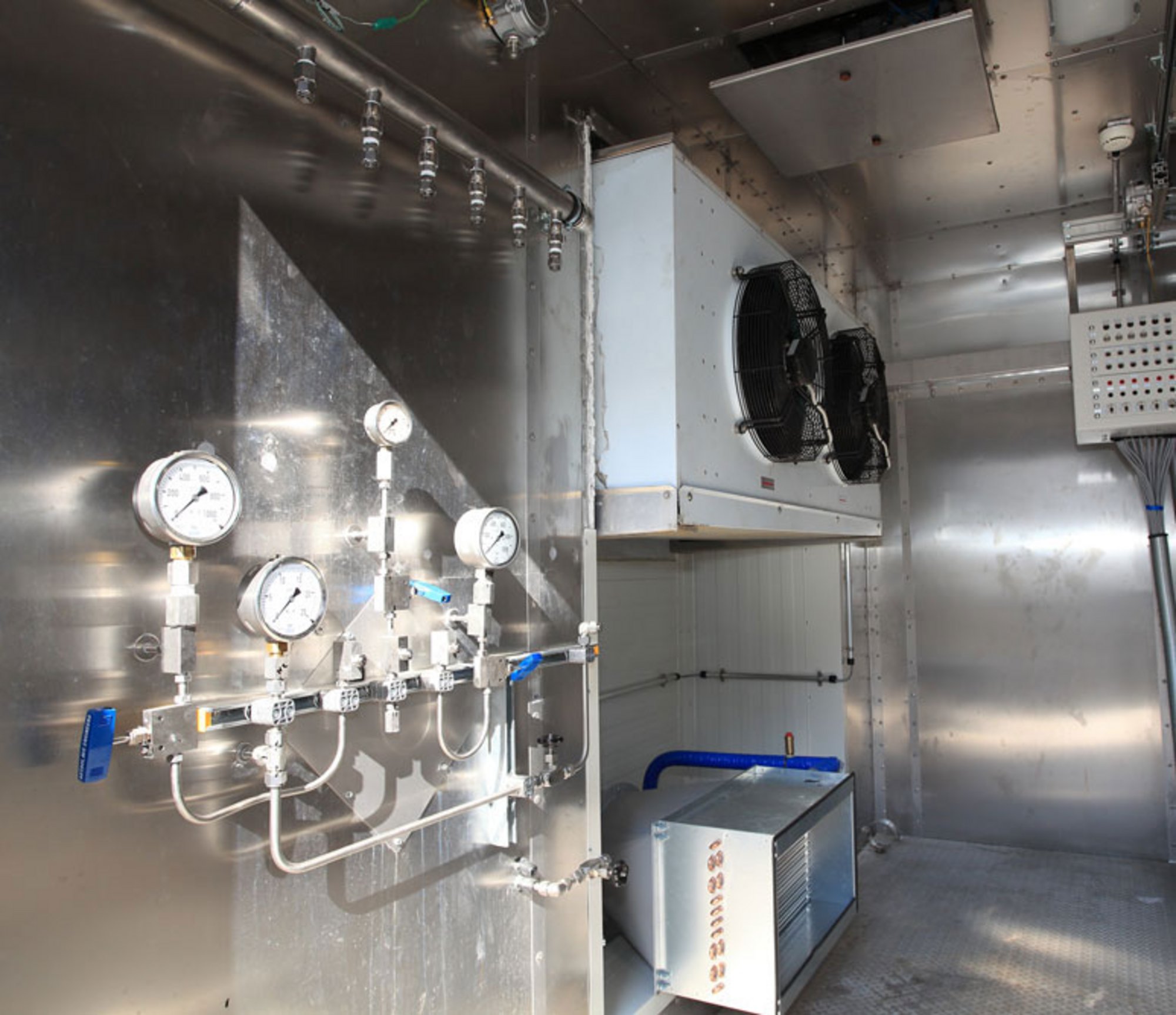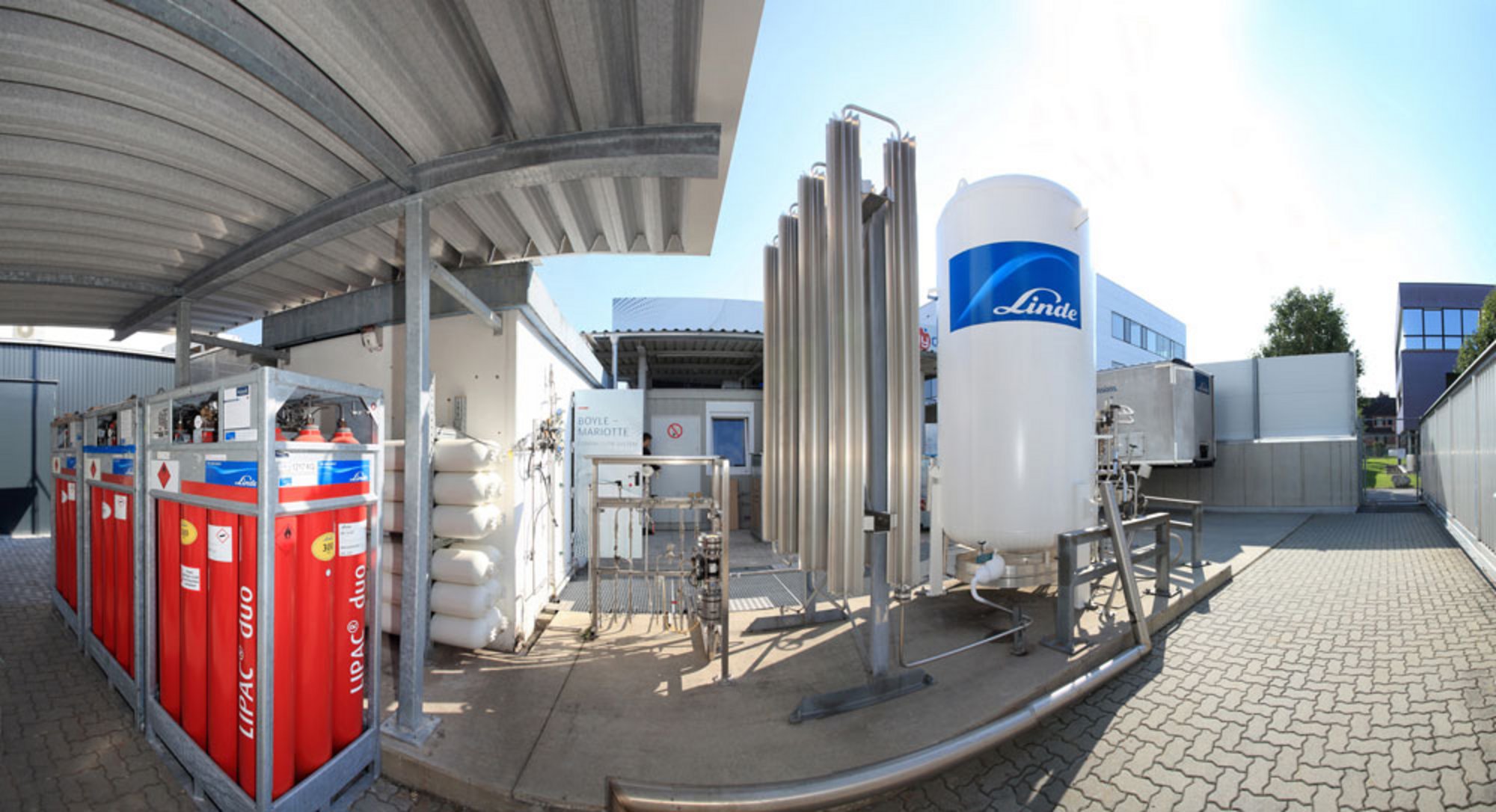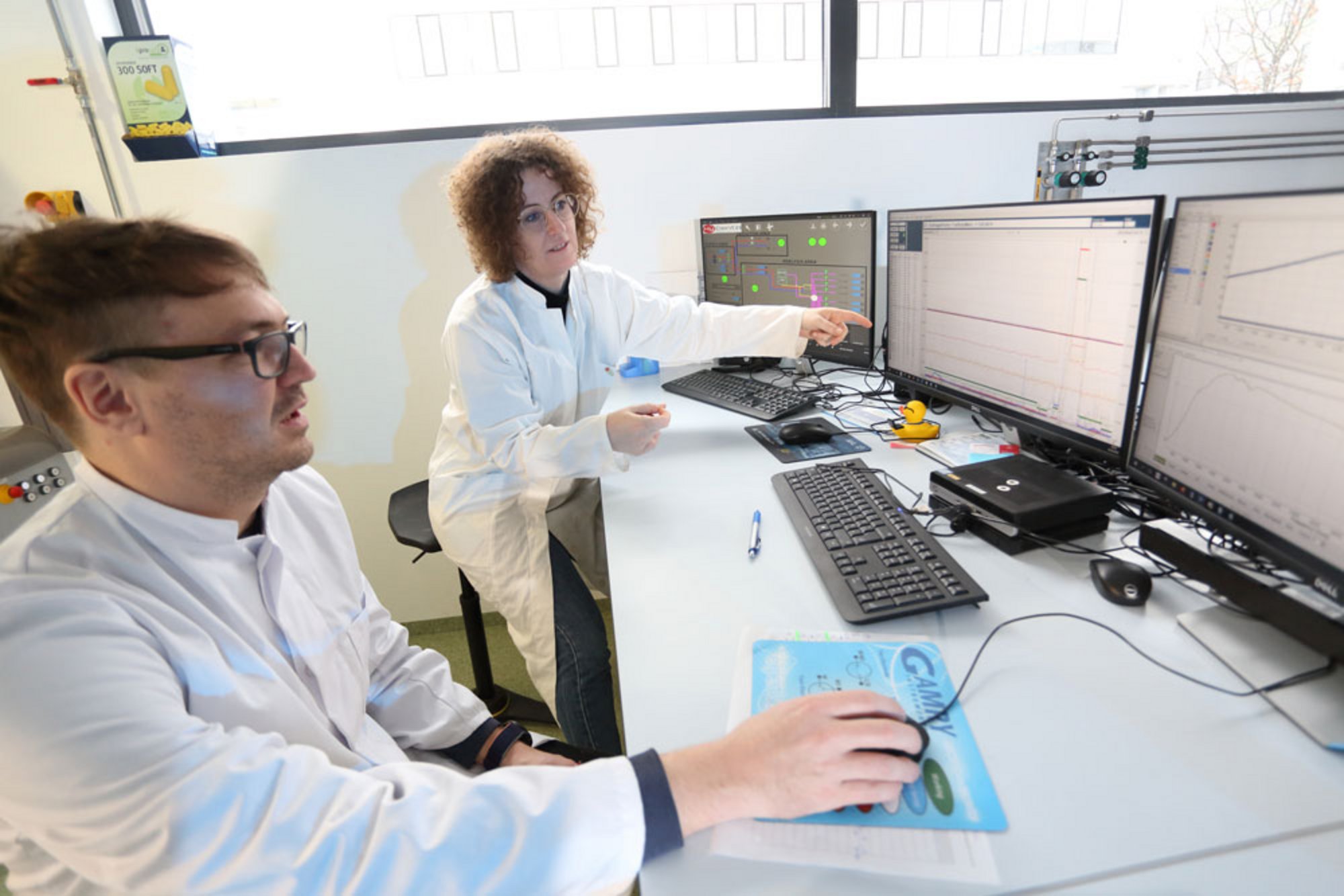Testing is an integral part of HyCentA's research portfolio to advance hydrogen technologies along the entire value chain. In the laboratories and test stands at HyCentA, performance, safety, degradation behaviour and reliability are examined and tested in real operation with hydrogen. For this purpose, HyCentA has a wealth of test rigs and laboratories at its disposal, which meet the high and customised requirements of established test and inspection routines as well as specialised individual requirements from the HyCentA research portfolio and that of our partners. The different types of tests that can be carried out on the test benches and in the laboratories include, for example, quality tests, calibration services, performance and efficiency tests, safety tests, endurance tests and tests under real environmental conditions.
Safety tests include, for example, leakage and safety tests to ensure that systems operate safely under standard conditions and in the event of unforeseen failure conditions. Life cycle testing on test stand can determine the long-term performance and reliability of hydrogen technologies and their ability to operate efficiently over an extended period of time.
Environmental tests on the test stands can, for example, simulate cold or heat loads to check how the system behaves under extreme conditions. The tests on test stands enable developers, engineers and researchers to generate data under different boundaries and to carry out operational optimisations before the system is used in a real and sometimes an extreme environment. In addition, HyCentA also uses onsite measurement equipment to evaluate potential influences and effects of the test vehicle on the environment in which it is used. The development of specific test protocols is crucial for the success of hydrogen technologies. They play a crucial role to ensure the reliability and safety of components, aggregates and systems.
Intensive testing on our test stands allows to identify potential problems and to resolve them before the technology is deployed in a real-world environment. This saves time and money and improves performance and reliability. Specially developed monitoring tools enable the accurate diagnosis in the early phases of testing and pilot operation.





